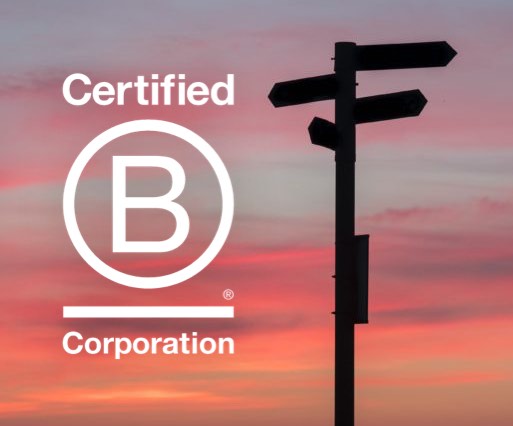The number of for-profit companies registering to become B Corporations (B Corps) is increasing on a weekly basis. But is this just yet another reporting or marketing tool in the sustainability toolkit or are there wider evidence-based benefits for SMEs? This article discusses the B Lab movement, its impact Assessment tool and B Corp certification. It then explores the reasons why one SME decided to become a B Corp and sets out the process and lessons learned so far.
What is the B movement and the B Corporations?
B Corps are “businesses that meet the highest standards of verified social and environmental performance, public transparency, and legal accountability to balance profit and purpose”. [1]
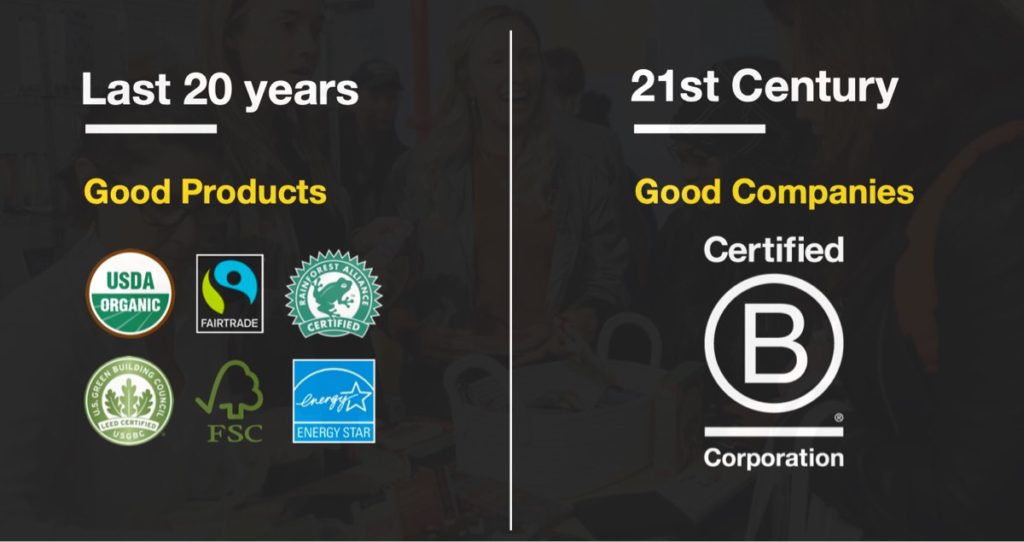
The B Corp movement originated in the United States in 2007. It is overseen by the B Lab Foundation whose mission is to “promote a global network of partners guided by interdependence to advance economic system change”.
There are currently over 4,200 B Corps including more than 25 publicly-listed companies), across 77 countries in 153 different industries. With more than 1,000 certified companies, Europe has the fastest growth rate worldwide. In 2015 the initiative was launched in the UK and (at the time of writing this article) there are now 707 B Corps, including companies such as The Bodyshop, Coutts and Innocent Drinks.
During the Covid-19 pandemic the B Corp community of certified businesses grew by 25% globally [3] and 32% in the UK, where numbers have doubled since 2018 [4]. As a stakeholder-driven movement it is becoming an important part of the recovery in all sectors of the economy because it simply makes good business sense. [5]
B Corps are part of a local, regional and global network determined to use business as a force for good. They are able to tap into a vibrant community of fellow, like-minded companies, benefitting from the movement’s interdependent and collaborative spirit, as Lorna Davis, a former Danone senior executive, explains in this Ted Talk.
There is an on-going pipeline of initiatives based on shared learnings and taking meaningful action. A great example is the B Corp Climate Collective, which was launched in 2019 to accelerate climate action and there are now 2,000-plus global business leaders actively sharing best practices and 1,400-plus B Corps have pledged to reach Net Zero by 2030.[2]
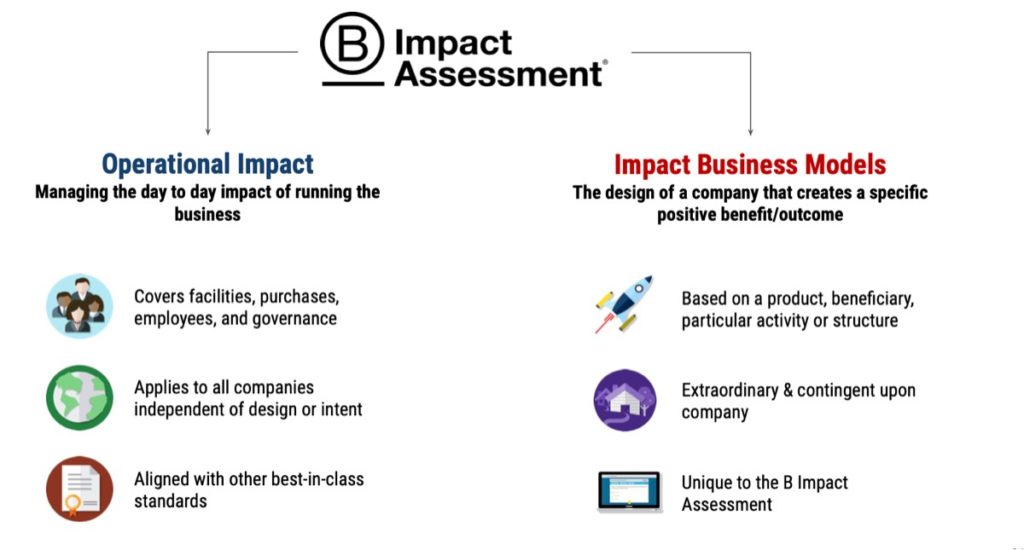
Since 2019, there has been a 60% increase in the number of businesses registering to use the B Impact Assessment (BIA) tool.
How do you start the certification process?
The BIA is a first step for businesses to start measuring their ESG performance. Free, confidential and comprehensive, it is a tool used by more than 150,000 for-profit and not-for-profit organisations of all sizes, in all markets and sectors, covering five key impact areas: governance, community, workers, environment and customers. Not-for-profit organisations can use the BIA tool to assess their baseline and use the results to develop their own roadmap, but only for-profit businesses can complete the certification process and achieve B Corp status.
Certification requires a minimum score of 80 points out of 200, following a strict review process that can take up to a year to complete. Far from being an end in itself, it helps a business set a roadmap for continuous improvement and to renew its certification every three years [6]. A unique aspect of the B Corp certification is the requirement for companies to commit to a legal charter putting all their stakeholders, not just shareholders, at the centre of their business. [7]
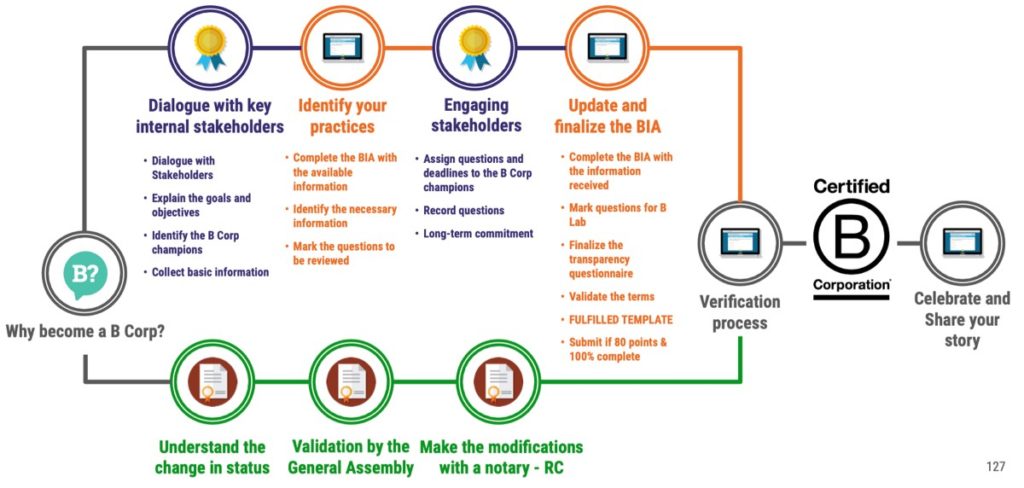
What is the value of becoming a B Corp?
Last year’s COP26 summit and the latest IPCC report demonstrated the urgency and importance for all stakeholders to combat climate change. These events have warned the world is now at a so-called “code red for humanity”, which calls for collective behavioural change to avoid climate breakdown and to secure a sustainable planet for future generations. Going forward, companies will experience increased scrutiny about their Environmental, Social and Governance (ESG) reports and on the pledges they have made. B Corp certification has become the global gold standard for purpose-driven companies committed to delivering benefits for people and the planet while remaining profitable.

Some evidence-based benefits of becoming a B Corp include:
– B Corporations are more resilient: “In the last financial crisis, B Corps were 63% more likely to survive than other businesses of a similar size”.[8]
– Driving performance: Two thirds of all B Corps saw increased revenue in 2020. UK B Corps reported an average growth rate significantly higher than the national average.[9]
– Attracting cheaper credit and improving credit rating: Danone renegotiated a 2-billion-euro syndicated banking loan with 12 major banks. [10]
– Mitigating greenwashing and regulatory risk due to B Corp certification high standards, scoring transparency, independent evaluation, regular scrutiny and certification renewal.
Case Study of a SME
Virtus Energy Limited (VEL) is an electric vehicle-charging infrastructure installation company that started trading in July 2019. VEL is a customer-focused company operating in a sector where customers are naturally more environmentally and socially conscious. In June 2021, the company’s board of directors revealed its intention to become a B Corp-certified company and appointed a Director of Strategy and Sustainability. The Board wanted to ensure the company was doing things right from the beginning and reviewed a variety of certification schemes before selecting B Corp due to its rigorous process and reputation. It wanted to use the BIA process to inform its corporate strategy and establish new foundations upon which the company could grow.
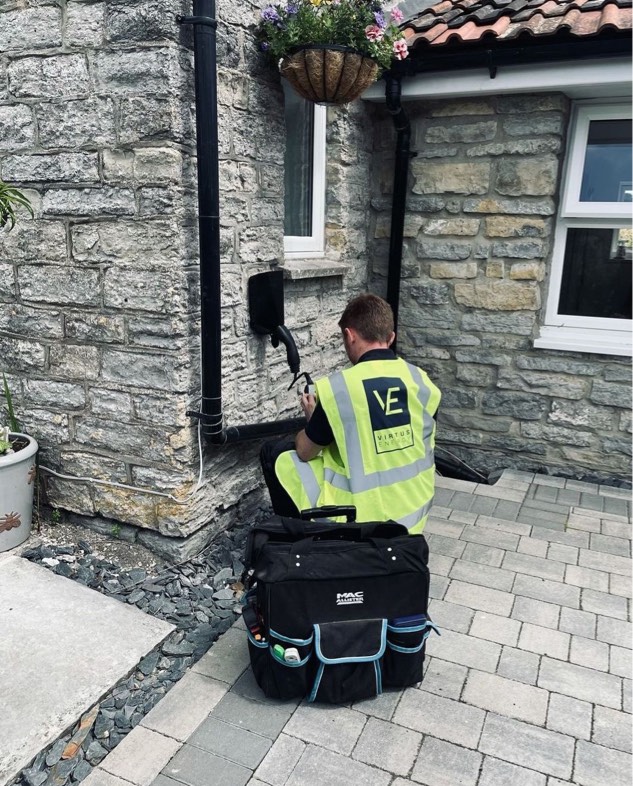
To date, VEL has completed the following steps:
– Step 1: Board of Directors has reviewed and confirmed acceptance of B Corp’s proposed legal text changes to VEL’s Articles of Association.
– Step 2: The company’s Director of Strategy and Sustainability and Chairman completed the initial BIA.
– Step 3: The results of the initial BIA and Impact Reports were reviewed by the company’s leadership team. As they were lower than the required minimum target, a review of the B Corp Best Practice Guides was completed. An action plan was developed highlighting the key operational improvements that would need to be implemented across the business. All staff were consulted on the contents of the plan and they were encouraged to contribute their own suggestions on what the company could do differently. A leadership team meeting took place to discuss the action plan and agree on the short, medium and long-term recommendations.
– Step 4: In consultation with the outsourced HR team, the company implemented some of the new measures according to the action plan with others due to follow in the future.
– Step 5: Three months after completing the initial BIA the company carried out a second BIA. The results showed a vast improvement and resulted in more than the minimum requirement. The company was able to submit its formal application.
VEL is currently responding to information requests from the B Lab to independently verify its score. Due to the volume of companies looking to become certified, the B Corp website states the review process is likely to take from 6 to 8 months to complete with recertification taking place every three years to ensure standards haven’t dropped.
VEL says the B Corp journey has been onerous and more evidence intensive than what is required by other professional accreditation bodies, but it is convinced it is a process worth pursuing.
Key lessons in the B Corp journey
1. Confirm your goal. Before starting the BIA, decide if you want to become a B Corp or are simply looking to improve your ESG credentials by completing the BIA.
2. Gain senior leaders’ buy-in. If you aim to become a B Corp, the company’s Board of Directors and senior leadership team must agree to making changes to the company’s Articles of Incorporation and adopt the legal text provided by B Corp. This needs to be approved before proceeding with the application.
3. Ensure inclusiveness and accountability. All staff, supply chain and customers need to be included in the process. Communicate what you are doing and why.
4. Take a conservative approach to the BIA. If you’re not doing something, don’t say you’re doing it. The BIA is a “snapshot” of your business’ direct and indirect impacts today, not about where your business will be tomorrow. Be sure to substantiate your statements.
5. Aim high. In order to qualify for certification, aim for a target of 90 points instead of the minimum 80. This will save you time and spare you from starting all over again if your evidence doesn’t meet the B Corp standard and your score is therefore downgraded.
6. Don’t wait to get started: Even if your business is small and in its early development stage, the BIA is a great tool to set you on the right track from the start. An adapted approach to certification will apply based on the size and maturity of your organisation. For a startup with less than 12 months of operation, a Pending B Corp status can send the market/customers clear signals about your company’s values and intentions.[11].
7. Reach out to the global B Leaders network for help!. The BIA can be challenging to navigate for a small company with few resources – B Lab- trained experts called B Leaders (or B Multipliers in the Spanish speaking world) can support you along the process. Check your local or regional B Lab websites for a list of B Leaders to choose from.
REFERENCES
[1] https://bcorporation.uk/about-b-corps
[2] 2020_B_Lab_Annual_Report_Final.pdf
[3] 2020_B_Lab_Annual_Report_Final.pdf
[4] https://www.pwc.co.uk/industries/retail-consumer/insights/b-corporations-in-2020.html
[6] https://bcorporation.net/certification
[7] https://bcorporation.net/certification/legal-requirements
[8] https://bthechange.com/good-news-b-corps-are-more-prepared-for-the-future-d1a570165d28
[9] https://www.pwc.co.uk/industries/retail-consumer/insights/b-corp.html
[11] https://bcorporation.net/certification/pending-b-corps
This article was written by @SarahWixey, @Rania Al-Baroudi Wharton, @Esther Val and edited by @Rosie Davenport.



